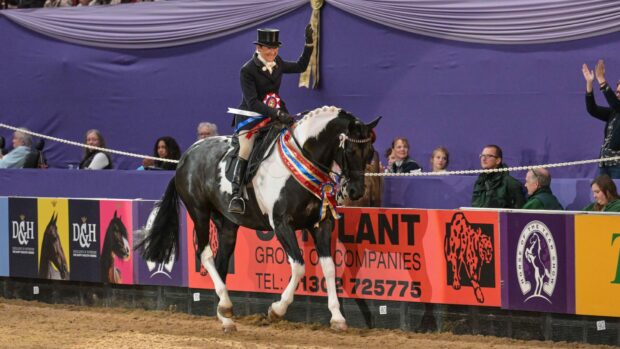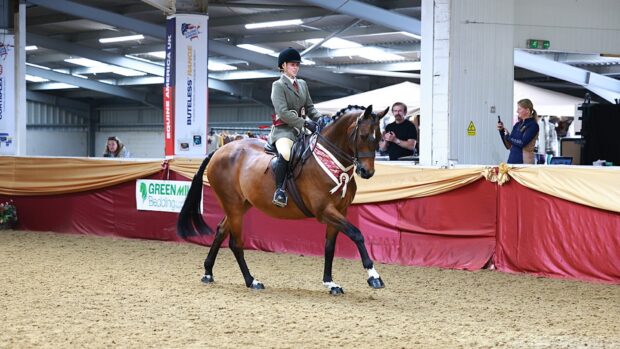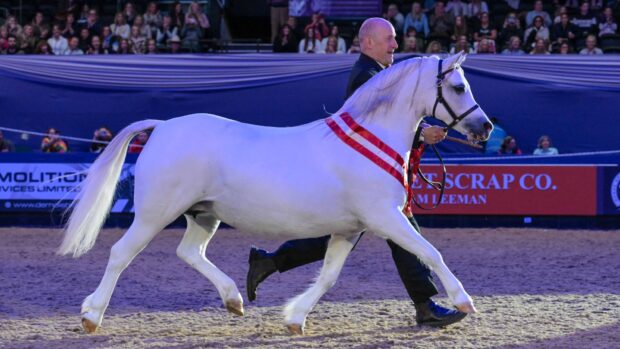Val Sheehan is known industry wide for his knack at finding top show horses.
Val has discovered many of the circuit’s best show animals and the keen hunting enthusiast and showman, who was recently overall cob champion at Royal Norfolk riding heavyweight Red Dove, has cemented his name as the go-to person to approach if you’re looking for a show cob.
Val and his wife, Camilla Neame, are a formidable team and together they have brought many leading show cobs to the attention of the showing world, including Horse of the Year Show (HOYS) supreme champion So Smart, six-time HOYS winner Starry Night, and the 2021 HOYS cob champion and reserve, Red Butler and Red Rock III, among others.
“It’s so hard these days,” said Val, when he spoke to H&H showing editor Alex Robinson on episode 109 of the Horse & Hound podcast. “Real quality cobs are so hard to find. Forget going to the fairs in Ireland as there are 50 people looking for the same thing. If you want a good cob, number one you have to pay for it, and number two you need to go to the right people.”
When viewing a potential cob, the main attributes Val is looking for include quality limb, depth of the body and correct type.
“The superstars are all good, correct cobs, but it’s the people who produce and put the work into them which really elevates them to that next level,” Val continued. “You can have the best cob in the world but if it doesn’t want to do the job, it simply won’t. Similarly, if it’s not produced properly it’s not going to do the job either. I’ve had some lovely cobs over the years disappear for a number of reasons.”
Val maintains that the best way to commence a hunt for a prospect cob is by ensuring you go to the right people, while being realistic about your goals.
“Phone the ‘cob people’ who have the contacts,” said Val. “You must be realistic about what you want to do with your horse. You might want to go to HOYS, but the cob who usually wins HOYS is something a little special. It might need a few hours working in, and you must ask yourself if that is something you want to do everytime you go out.
“Spend your money wisely, too, so you’re not putting years of work into something which isn’t good enough. There’s a lot of time and money spent on entries, schooling, diesel and effort that goes into producing a horse.”
When Val is first assessing a prospect cob, he starts from the bottom up.
“I look down first; I like lots of traditional bone, quality limb and a good forearm and second thigh,” he said. “A cob should be low to the ground; it should be 60 percent body and 40 percent leg. It should be a horse on short legs and not a big pony. It should stand over the ground and be nice and deep in the body. Ideally, a cob should be a shrunken down heavyweight hunter.
“Nowadays, some of the cobs have a common influence. Some of the novices are more common and are being rewarded as they move well, have been well produced or have nice fronts. While ride is important, quality and type should be rewarded. I wonder if 40 marks should be awarded for ride, and 60 for type and conformation.”
Find out more about Val, including how he got started in the show ring and some of the top cobs he’s found, on episode 109 of the Horse & Hound podcast.
You may also be interested in…

The Horse & Hound Podcast 109: Cob finder Val Sheehan | Hickstead Derby | A vet’s life | News update

How to listen to the Horse & Hound Podcast: a beginner’s guide to podcasts

Subscribe to Horse & Hound magazine today – and enjoy unlimited website access all year round
Horse & Hound magazine, out every Thursday, is packed with all the latest news and reports, as well as interviews, specials, nostalgia, vet and training advice. Find how you can enjoy the magazine delivered to your door every week, plus options to upgrade your subscription to access our online service that brings you breaking news and reports as well as other benefits.




